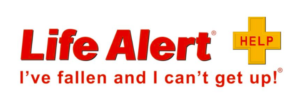Compared to Life Alert’s at-home and package offerings, its on-the-go offering is more modestly priced. While Life Alert does provide free shipping and free use of the equipment, there’s also a one-time equipment activation fee.
The company doesn’t offer a trial option, which makes taking on the service a risk that not everyone will be willing to take—especially given that the company requires users to enter a three-year contract that can only be broken under certain stringent conditions. Life Alert does offer a discount for those who pay a year in advance, as well as a free warranty for its equipment.
What Customers Are Saying About Life Alert
Life Alert’s site is outdated and doesn’t provide helpful pricing or subscription information. You have to call the company to get more information, but it may even be difficult to get pricing and product details over the phone.
In one instance, the salesperson refused to provide basic cost information to our secret shopper asking questions as a family member would, saying those details could only be shared if the person who would actually use Life Alert was also on the phone.
The company receives mixed feedback in online reviews. The Better Business Bureau (BBB) gave Live Alert an A+ rating, and its overall customer review ratings averaged 3.7 out of 5 stars.
Life Alert has 1.8 stars out of 5 on Trustpilot, and BestCompany gave it a dismal 2.2 overall rating on a 10-point scale. Customers across review sites praise Life Alert for its swift response time and the attentive, helpful, and caring call center staff, but they criticize the company’s three-year contract and harsh cancellation policy, as well as its pushy sales tactics and rude sales personnel.
Life Alert Alternatives
For a comprehensive list of better Life Alert alternatives, check out our best medical alert systems review.
Bay Alarm Medical is our top pick with an overall rating of 9.62/10 from our team. It’s a more cost-friendly alternative and has features Life Alert doesn’t have, like optional fall detection, a smartwatch option, 1,000 foot protection range from the base station, and more.
Bay Alarm Medical’s at-home system costs $21.95 per month, which is less than half the price of Life Alert ($49.95 per month). The on-the-go subscription is slightly more than Life Alert at $29.95 per month versus $19.95 per month, but with the price increase comes additional features.
Bay Alarm Medical’s site is much easier to navigate than Life Alert’s, with all subscription prices and add-on features clearly displayed. You or your caregiver can purchase a medical alert subscription straight from the company’s site.
The company also offers a risk-free trial period and fall detection ($10 per month), plus an app for caregivers to track and monitor the user. Bay Alarm Medical is a less expensive alternative to Life Alert with more features, making it the superior option in our opinion.
How Life Alert Compares to Other Medical Alert Systems
Medical Guardian
Medical Guardian earned the second-highest spot in our best medical alert system roundup with an overall rating of 9.57/10. If you have a more active lifestyle, this system may be for you. The company offers at-home and mobile options and TMA Five Diamond Certified monitoring centers. Active older adults can choose from two lightweight mobile devices with optional fall detection or the MGMove Smartwatch.
Medical Guardian’s services, like Life Alert, are more expensive than average. The starting monthly price for at-home systems is $29.95 and $39.95 for on-the-go systems.
Medical Guardian offers a risk-free trial period, giving users the chance to try the product before committing to a long-term contract. However, Medical Guardian does not offer a free warranty—protection plans cost more. Life Alert does offer a free warranty.
MobileHelp
Another company in our best medical alert system review, we gave MobileHelp an overall rating of 9.05/10. This brand is great for older adults who stay close to home. The starting price for the at-home system ($19.95 per month) is lower than the industry average and is less than half the cost of Life Alert’s at-home option ($49.95 a month).
MobileHelp offers a truly one-of-a-kind at-home option: a high-tech tablet that includes standard medical alert features like an emergency help button that connects with a monitoring center, advanced features like caregiver tracking and medication reminders, and extras like brain games and a picture gallery.
The Touch Classic costs $54.95 per month along with a one-time equipment fee of $99.95. MobileHelp offers a free trial period and subscriptions designed for couples or roommates.
LifeFone
Lifefone is another brand featured in our best medical alert system review and has a 8.77/10 overall rating. We named LifeFone as “best on-the-go coverage” due to its lightweight, discreet mobile systems with excellent battery life.
Many reviewers on Trustpilot have commented on the company’s excellent customer service, specifically mentioning that the representatives contact older adults and caregivers when the battery becomes low. LifeFone’s at-home system starts at a lower price point than Life Alert ($29.95 versus $49.95). One advantage of Life Alert is that its monitoring centers are TMA Five Diamond Certified, while LifeFone’s are not.
How to Sign Up for Life Alert
You can’t sign up for Life Alert’s services online—you have to call the company’s 1-800 phone number. You’ll purchase your system completely over the phone, unlike most competitors that allow you to purchase your medical alert system online.
Life Alert will schedule a technician to properly install equipment after you receive it. This service is included in your $198 equipment and installation fee.
How We Rated Life Alert
You deserve the best products for a better quality of life. We strive to create honest, helpful reviews backed by firsthand shopping, testing, and research. Our content is medically reviewed and unbiased to help you choose the right medical alert system for you or your loved one.
We reviewed Life Alert based on the following criteria:
- Monthly price and installation fees
- Warranties, contracts, and hidden fees
- Monitoring center certifications
- Comfort and wearability of mobile devices
- In-home range from base station
- Water resistance of wearable devices
- Battery life and recharging requirements
- Ease of installation and use
- Expert opinion
- Customer service
- Customer reviews from trusted third-party sites
- Company reputation
Special features such as automatic fall detection, smartphone apps for family members, and location tracking
Bottom Line
Life Alert doesn’t offer the most-advanced features, but it’s one of the most established and well-known medical alert companies in the industry. It offers a basic at-home subscription and an on-the-go device without many standard features like fall detection, a caregiver app, or health monitoring.
Life Alert maintains multiple TMA Five Diamond Certified monitoring centers, the gold standard certification awarded by The Monitoring Association.
The company is known for its higher-than-average prices, pushy sales tactics, and binding three-year contract with a harsh cancellation policy. Keep this in mind if you’re considering Life Alert, and also check out these 11 other companies we recommend over Life Alert. We also suggest learning more about personal emergency response systems in general before making a decision.


